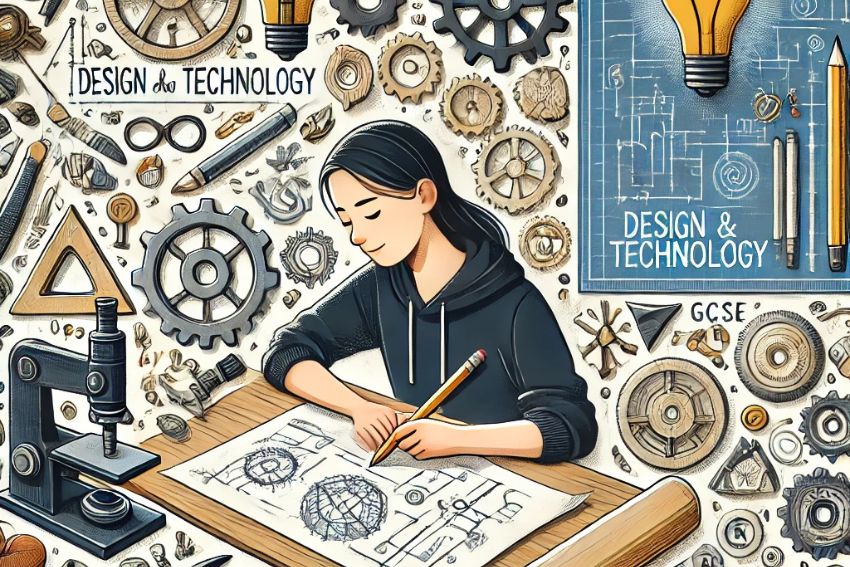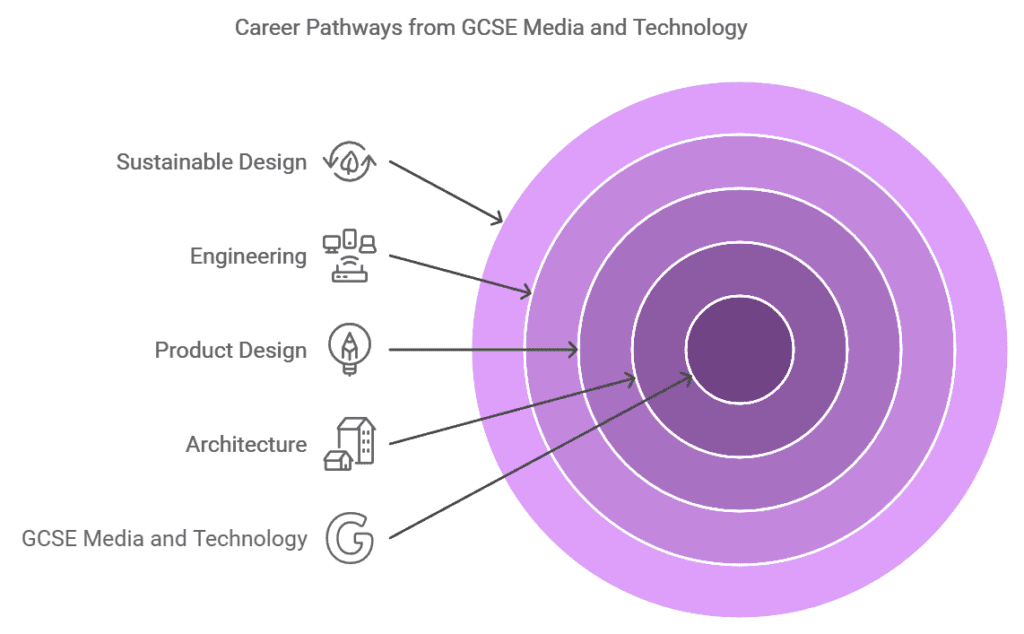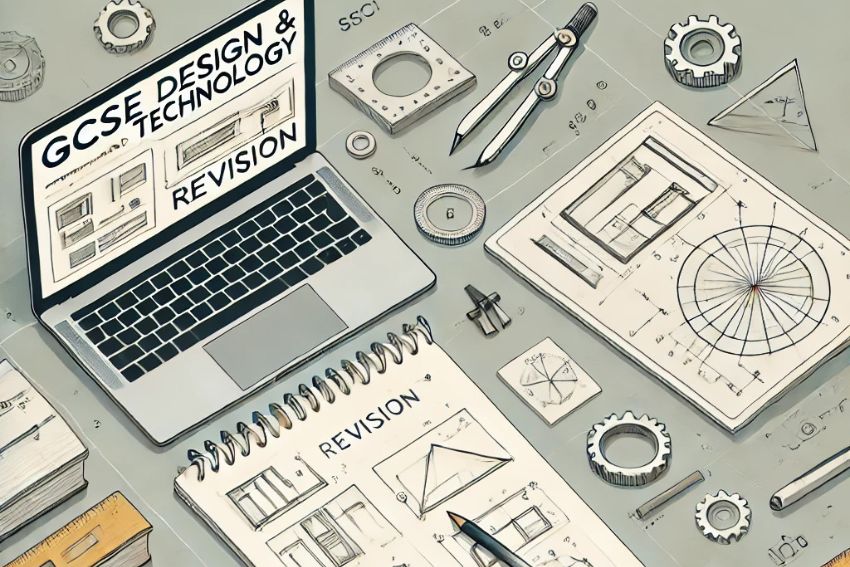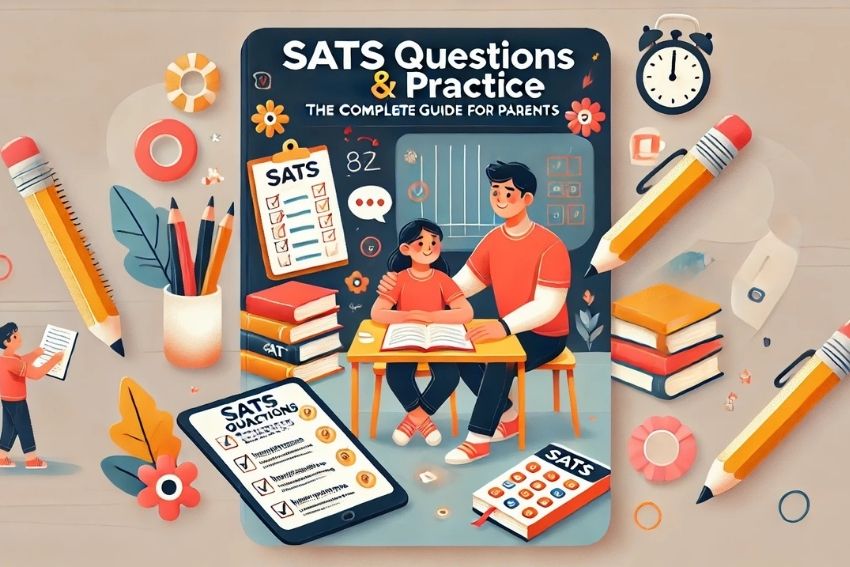GCSE Design and Technology: Your Step-by-Step Guide
If you’re considering taking GCSE Design and Technology, or you’re a parent or educator supporting someone who is, you’re in the right place.
As one of the most dynamic GCSE courses in the UK, this subject is all about creativity, problem-solving, and innovation. It encourages students to think critically while developing practical skills that can be applied to real-world challenges, reflecting the broader significance of GCSEs in shaping foundational knowledge and skills for future success.
GCSE Design and Technology is more than just a subject, it’s a foundation for careers in design, engineering, and technology. By working with materials, creating prototypes, and solving design challenges, students build skills for further studies and future careers.
This blog covers everything about GCSE Design and Technology, from topics and coursework to revision tips and career paths. Whether you need help with coursework, exam prep, or using past papers, we’ve got you covered. Let’s explore the exciting world of design and technology!

What You Need to Know About GCSE Design and Technology
GCSE Design and Technology is a fascinating subject that combines creativity, engineering, and problem-solving. In essence, it’s about thinking outside the box and creating practical solutions to real-world problems. If this sounds like you, and you love designing, building, or creating, this subject could be a perfect fit for you.
Moreover, beyond traditional learning, it focuses on innovative thinking and hands-on skills. One of the best aspects of GCSE Design and Technology is how it encourages you to think like an innovator. You’ll learn to identify problems, explore ideas, and turn those ideas into functional designs-a process known as design thinking, widely used in fields like product design, architecture, and engineering.
What’s more, this subject prepares you for life after school. The skills you gain-such as creativity, teamwork, and technical knowledge-are essential for many careers. Whether your goal is to design sustainable products or tackle challenges in technology, GCSE Design and Technology provides a solid foundation to help you achieve your ambitions.
What Makes GCSE Design and Technology Unique?
GCSE Design and Technology helps you build practical skills, creative thinking, and technical knowledge. It’s all about learning how to solve problems and create real-world solutions.
One of the main goals is to teach you about different materials and how to use them. You’ll learn to choose the right materials for a project, considering things like strength, sustainability, and how they work in the final design. You’ll also practice taking your ideas from rough sketches to detailed plans and, finally, creating prototypes.
This subject also helps you develop useful skills like teamwork, critical thinking, and managing projects. These skills are not just for school-they’re important for higher education and careers too. Whether you’re thinking about design and technology GCSE courses or a future in product design, engineering, or architecture, this subject gives you a great start.
By the end of the course, you’ll feel confident tackling challenges creatively and practically. GCSE Design and Technology is all about helping you succeed in school and beyond.
Key Topics Covered in GCSE Design and Technology
Now that you understand the goals of GCSE Design and Technology, let’s explore the exciting topics covered in the course. This subject spans a variety of areas, including understanding materials, using tools, and creating innovative prototypes. Moreover, each topic is designed to help you connect creative ideas with practical solutions.
The course is not limited to one skill-it’s a blend of creativity, engineering, and problem-solving. By exploring GCSE Design and Technology topics, you’ll gain knowledge that applies to many fields, preparing you for higher education and real-world challenges. Let’s break down these key areas of study and see how they come together to make this subject truly interdisciplinary.
Key Areas of Study in GCSE Design and Technology
| Key Area of Study | What You’ll Learn | Why It Matters |
| Materials | Understanding properties, strengths, and uses of materials like wood, metal, plastic, and composites. | Helps you select the right materials for projects and design solutions that are sustainable and functional. |
| Processes and Tools | Learning how to use tools and machines safely and effectively for manufacturing. | Builds practical skills essential for prototyping and creating high-quality products. |
| Design and Prototyping | Turning ideas into detailed sketches, plans, and working prototypes. | Encourages creativity, problem-solving, and the ability to visualise and execute solutions to real-world challenges. |
| Sustainability and Innovation | Exploring eco-friendly designs, recycling, and innovative problem-solving. | Prepares you for roles in sustainable industries and encourages environmentally responsible thinking. |
| Engineering Concepts | Understanding forces, structures, and mechanisms in design. | Builds foundational knowledge useful for fields like architecture, product design, and engineering. |
GCSE Design and Technology Coursework Explained
GCSE Design and Technology coursework strikes a perfect balance between theory and practical work. This means you’ll not only learn the concepts behind good design but also get hands-on experience turning your ideas into reality.
A big part of the coursework is the Non-Examined Assessment (NEA). This project allows you to showcase your creativity and technical skills by designing and creating a product. You’ll start with an initial concept, researching and developing your ideas. Then, you’ll move on to building a prototype that solves a specific problem. This process mirrors what professionals do in careers like product design and engineering.
Throughout the coursework, you’ll learn valuable skills such as project management, research techniques, and prototyping. Studying GCSE Design and Technology topics will help you connect your knowledge to real-world applications. Reviewing past GCSE Design and Technology coursework examples can inspire your own project.
Moreover, the NEA helps you prepare for further studies, such as GCSE Design and Technology courses, and careers in sustainable design, architecture, or engineering. Pairing it with solid revision and practice using past papers can set you up for exam success and beyond.
Everything You Should Know About The GCSE DT Exam
Now that we’ve explored the GCSE Design and Technology coursework, it’s time to look at the exam component. While the coursework allows you to demonstrate creativity and hands-on skills, the written exam focuses on your understanding of the key concepts and theories behind design. This is where your knowledge of GCSE Design and Technology topics truly comes into play.
The exam tests your ability to apply theory, solve problems, and analize designs. While AQA, Eduqas, OCR, and WJEC vary slightly in structure, they cover similar content. These include topics like materials, sustainability, and engineering principles.
Understanding the format and types of questions-such as multiple choice, short answer, and extended response-is crucial for success. Let’s take a closer look at the exam structure and how it evaluates your understanding of the subject.
How to Excel in GCSE Design and Technology: Key Strategies
Succeeding in GCSE Design and Technology requires a mix of good organization, creative thinking, and effective revision. Here are some practical tips to help you manage both your coursework and exam preparation.
- Manage Coursework and Deadlines: The Non-Examined Assessment (NEA) is a big part of the course, so staying organized is essential. Break your project into smaller tasks with specific deadlines. This will make it easier to keep track of your progress and avoid last-minute stress. Always document your work, as this helps show your thought process and creativity.
- Focus on Research and Idea Development: Strong research is the foundation of a successful project. Look into real-world examples related to your GCSE Design and Technology topics for inspiration. Experiment with different ideas, and don’t hesitate to refine your designs along the way. This approach helps you create a well-rounded and innovative prototype.
- Collaborate and Seek Feedback: Don’t underestimate the value of collaboration. Share your ideas with classmates, teachers, or even family members to get fresh perspectives. Feedback is crucial for improving your project and refining your understanding of difficult topics.
- Revise Effectively for the Theoretical Exam: Use a variety of revision tools to prepare for the written exam. Flashcards are excellent for memorising key terms, while past papers help you understand the types of questions you might encounter. Practising sketching techniques can also enhance your ability to communicate design ideas clearly during the exam. Here are the past papers for the four main exam boards offering GCSE Design and Technology:
How Can GCSE DT Shape Your Career
GCSE Design and Technology offers a path to many exciting careers. Whether you enjoy creating, solving problems, or designing, the skills you learn in this subject are valued in many industries.
If you’re interested in architecture, this subject provides the basics for designing functional and visually appealing spaces. For those who love creating new products, product design allows you to turn ideas into practical, market-ready solutions.
If you enjoy problem-solving, engineering careers let you apply what you’ve learned in GCSE Design and Technology to real-world challenges. For creative minds, interior design or fashion and textiles allow you to blend practicality with artistic style.
A fast-growing field is sustainable design, where you can create eco-friendly solutions for industries like packaging, construction, and technology. The hands-on experience gained from working with materials, prototypes, and processes in GCSE Design and Technology coursework is directly useful in these areas.
The subject also helps you develop transferable skills like critical thinking, teamwork, and project management. These skills are valuable in any career, making GCSE Design and Technology a smart choice for building a strong and versatile skill set.

Which Resources Are Essential for GCSE Design and Technology Revision?
Having the right resources can greatly improve your performance in GCSE Design and Technology. Whether you’re preparing for exams, working on coursework, or exploring key topics, here are some helpful tools and guides to get you started.
Books and Revision Guides
Books like CGP’s GCSE Design and Technology Revision Guide and Pearson’s materials are excellent resources. They simplify complex topics and include examples that make it easier to understand key ideas.
Online Resources
Websites like BBC Bitesize and Seneca Learning provide interactive lessons designed for the GCSE syllabus. These platforms cover important topics, Have quizzes to test your knowledge and boost your revision motivation, making the process more engaging. YouTube tutorials on design software can also help you master tools needed for coursework.
Online Tutors and Workshops
If you’re struggling, online tutors can provide personalised help with coursework or exam prep, while workshops offer practical skills. These resources make tackling past papers and projects easier, boosting your confidence and motivation to succeed.

Conclusion
GCSE Design and Technology is more than a subject – it’s a pathway to creativity, innovation, and practical problem-solving. It equips students with skills and knowledge that go beyond the classroom, offering a strong foundation for further education and exciting career paths.
This course fosters critical thinking and project management by blending practical coursework with theoretical learning. The skills gained – such as teamwork, technical precision, and creativity – are valuable across industries like architecture, engineering, sustainable design, and product development.
If you ever feel stuck or overwhelmed, remember that extra help is always available. Online GCSE design and technology tutors can provide personalized support, helping you navigate challenging topics, improve your coursework, and prepare effectively for exams. They can also guide you through GCSE Design and Technology past papers and offer tailored feedback to strengthen your skills.
Success in GCSE Design and Technology requires consistent effort, effective revision, and access to the right resources. By exploring your creativity, staying organized, and seeking help when needed, you’ll build confidence and gain the tools to excel in this subject and beyond.
FAQs
What is design and technology in GCSE?
GCSE Design and Technology is a subject that combines creativity, problem-solving, and technical skills. It teaches students how to design and prototype solutions for real-world problems, covering areas like materials, engineering, sustainability, and design processes.
What do you need to know for GCSE DT?
For GCSE Design and Technology, you need to understand key topics like materials and their properties, design principles, manufacturing processes, and sustainability. You’ll also develop practical skills, such as sketching, prototyping, and evaluating designs. Knowledge of these topics will help you succeed in both coursework and exams.
Is Design and Technology GCSE difficult?
The difficulty of GCSE Design and Technology depends on your interests and skills. If you enjoy being creative and solving problems, you’ll likely find it engaging. However, it does require good organization to balance coursework and revision for the theoretical exam.
How to pass design and technology?
To pass GCSE Design and Technology, stay organized and plan your coursework effectively. Use revision tools like flashcards and past papers to prepare for the written exam. Focus on understanding key topics and seek feedback on your designs to improve your work.
What jobs can you get with design and technology GCSE?
A GCSE in Design and Technology can lead to careers in architecture, engineering, product design, interior design, fashion and textiles, and sustainable design. It also provides a strong foundation for further studies in design-related fields.








